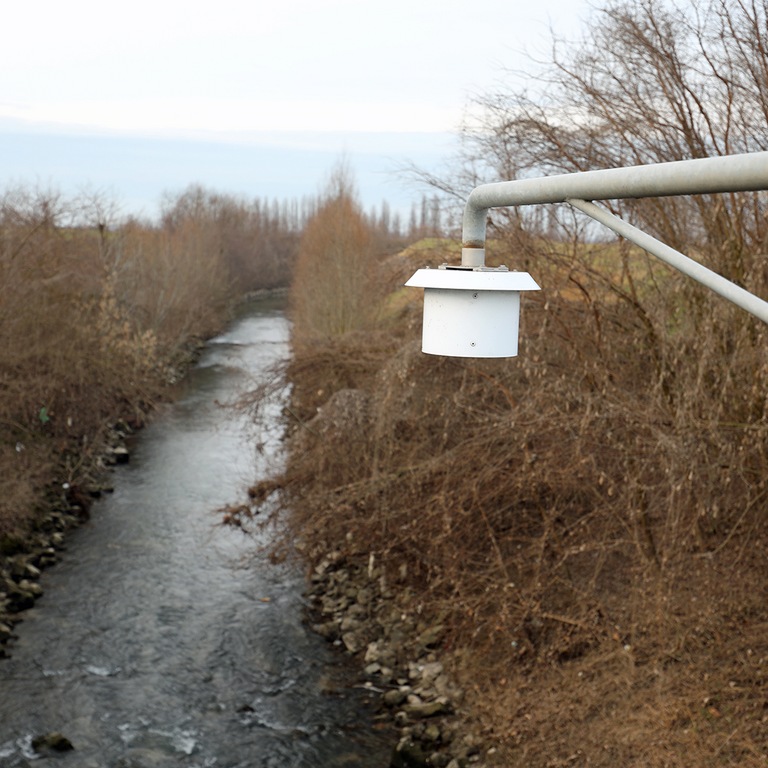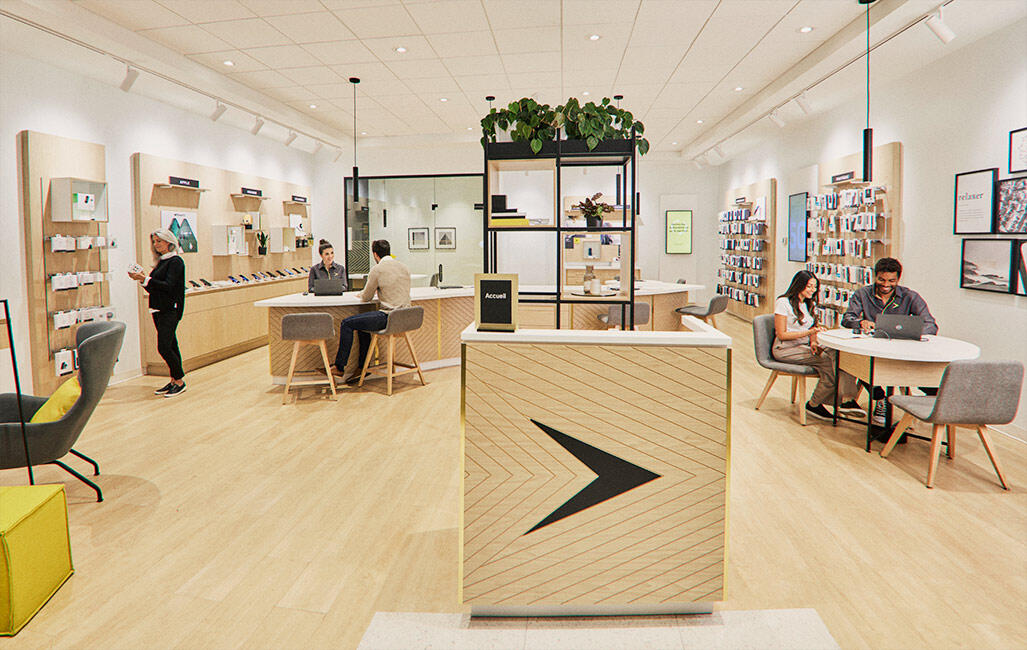
Welcome to the era of the Internet of Things (IoT) and its endless possibilities—the backbone of connected cities. A variety of sensors have come to be in the past few years, used to collect, analyze, store, and transmit information useful to decision-making through a centralized platform. Now, city administrators need to integrate this technological vision into their organization’s strategic planning—a process that involves quite a reflection beforehand.
Smart city: Who can help me?
The first step could be asking for the help of your telecommunications service provider. Videotron Business has the expertise you need to take you from point A to point B. The Réseau de l’informatique municipale du Québec (RIMQ)—whose annual symposium is the IT event of choice for municipalities—is another interesting resource to consult before starting your project.
The Internet of Things: Is your current infrastructure up to snuff?
Does your current technological platform have what it takes to help you move forward? If you have a closed platform, it will likely be impossible for you to add new third-party components. On the other hand, an open platform makes it easier for your project to progress. It is therefore important to check your equipment beforehand.

Connectivity: What are the different possibilities?
The different types of connectivity options available on the market also deserve to be more thoroughly analyzed. Contrary to popular belief, the LTE and 5G networks are not the only solutions available to meet the IoT needs of municipalities. Moreover, different sensors only work under certain protocols, like the LoRaWAN, for example.
The technologies proposed by Videotron Business and its partners to transition to a smart city are not exclusively limited to mobile network connectivity. We can connect both physical and virtual objects via our own wireless and wired networks. Here are a few innovative solutions cities can use to optimize their operations.
1) Smart waste management
You read that right: smart waste bins can be used in municipal and commercial sites to indicate their fill level, which can help optimize the time and frequency of waste collection. A solution that fosters the effectiveness of your resources and generates significant savings on a recurring basis.
Another benefit worth mentioning: it helps make your parks, common areas, and public places much cleaner and more inviting by sending out alerts when the waste level reaches the predefined limit. Your municipal employees can therefore offer timely service!
2) Optimized traffic management
Is road congestion a major issue in your neck of the woods? Sensors can help by counting the number of vehicles that pass at a given time and location in your town, helping you identify major traffic trends. Another type of sensor provides you with smart traffic lights, making traffic more fluid for drivers. These traffic lights are adaptable, meaning you can control traffic flow in real time. Can you believe it?
The Smart Traffic Management: Technologies, Use Cases & Market Forecasts 2021‑2025 study conducted by Juniper Research suggests that smart traffic management systems could help connected cities save up to $277 billion by 2025. In fact, 95% of these savings would be linked to reduced road congestion, based on an estimated reduction of more than 33 hours spent in traffic annually by drivers by 2025. North America and Europe could potentially be responsible for more than 75% of all savings. These figures look promising for the reduction of greenhouse gas emissions (GHG)!
The start-up company NoTraffic, founded in 2017, was named one of Time magazine’s 100 most influential companies of 2022. It just goes to show that this type of technology is a must. It’s also telling of how drivers feel about traffic issues.
3) Smart parking
The technology also helps maximize indoor and outdoor parking capacity. It facilitates users’ lives, as they get information on vacant parking spaces via a simple app. The app provides specific directions to get to the spot in question and gives different options for paying online.
By limiting traffic around properties within your municipality, you contribute to reducing GHG and makes it safer for those on the road. The aforementioned study states that smart parking investments will reach one billion dollars by 2025, compared to $460 million in 2021.
4) Constant water supply system monitoring
Infrastructures are not getting any younger; sometimes they just barely meet the demand. Waterflow sensors provide better insight into the condition of the city’s water supply and sewage systems. The different readings obtained make it easier to identify and prevent leaks and make it possible to quickly identify potential problems in the network.
Another area the technology can benefit from is the water quality in our homes. The IoT can help in monitoring water distribution and ensure it is compliant with the regulatory standards in place. An IoT water quality management system can measure a variety of parameters from several samples and transmit the results to the operators, who can then evaluate water quality remotely. Without these tools, samples are collected, analyzed, and compared manually—a long, expensive process.
5) Optimized water usage
Water is a precious yet limited resource; the Internet of Things helps ensure it is used wisely. Smart watering systems with humidity sensors allow for the city’s landscaped areas to be automatically and optimally maintained at the right time. It can also adequately dispatch the city’s watering trucks as needed.
You can now know the humidity level of every connected flowerbed in your city in real time. You no longer need to worry about watering uselessly after heavy rainfall!

6) Flood risk reduction
A river water-level sensor? You betcha! Several cities have once again been faced with flooding during the last snow melt and, more recently, as a result of heavy, sudden precipitations caused by climate change. Despite regular monitoring by municipal employees, water courses are overflowing. But at least they can now leave the good old measuring stick of yesteryear behind when it comes to gauging water levels.
Instead, your workers can now receive alerts on their smartphones 24 hours a day. Your teams are notified as soon as waters reach critical levels. They can therefore intervene at just the right time, instead of taking constant preventive trips to problematic sites. Such sensors help prevent damage caused by flooding in urban areas.
7) Citizen safety
When it comes to combining sensors, data, network connectivity, and a management app, the possibilities are endless. Technological innovations can help ensure the safety of citizens and keep the authorities available for situations where their help is crucial.
For example, you can ensure there is adequate, automated lighting in parks for those walking at night. Municipalities can also lock up the chalets and public restrooms after hours to prevent theft and vandalism in these places. Inversely, you can also facilitate the work of camp monitors by making sure these installations are automatically accessible, without a key, at a specific time when activities are held there.
Certain technological solutions can also contribute to your staff’s health and safety. The use of body cameras can help detect potential work hazards or warn the person wearing it of a potential incident.
8) Optimized fleet management
Municipalities also benefit from connected transport. A fleet of geolocated vehicles provides better logistics. You can now optimally plan the itineraries of each worker on the road and adapt this planning based on work progress and workforce availability.
Other features can also prove useful. Monitoring motorists’ behaviours on the road, planning periodic mechanical maintenance for trucks, and preventing fuel theft are just a few examples that may be of interest to municipalities looking for greater efficiency in their operations.
Our teams at your service
Videotron Business has solid partnerships with specialized firms, facilitating your own technological progress. As a telecommunications service provider, we offer much more than just a most reliable connection. Our one-stop shop of innovative solutions is a good starting point when it comes to designing your city of the future.
Municipal authorities who wish to implement the first building blocks of a connected city must therefore turn to a trusted partner to develop such a large-scale project. It goes far beyond the sensors: citizens need to be at the heart of the project.
So make Videotron Business—a provider experienced in the development of smart cities—your preferred partner. Contact us today to put your urban development project on the fast-track!
13 september 2023, By Videotron Business






